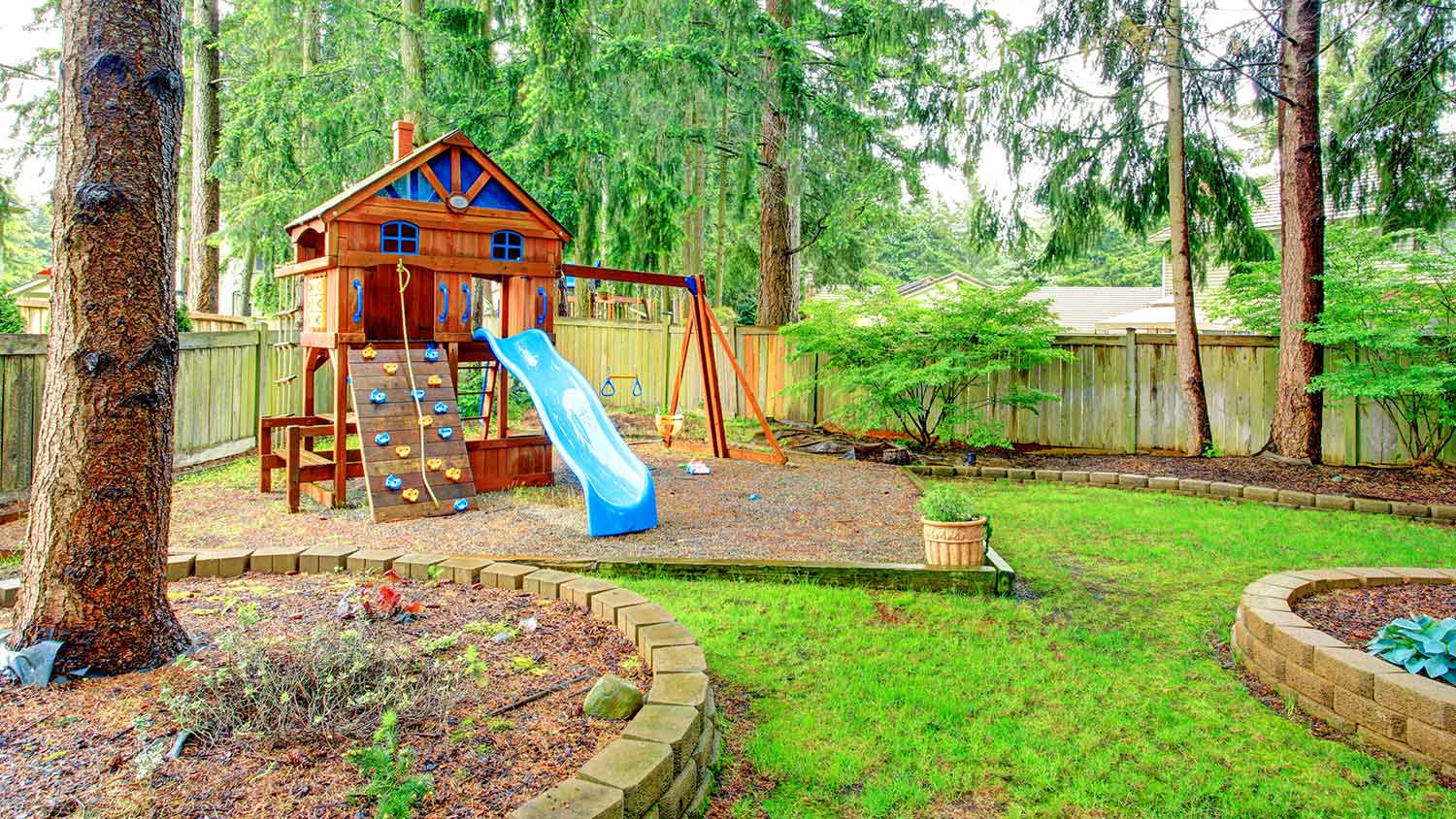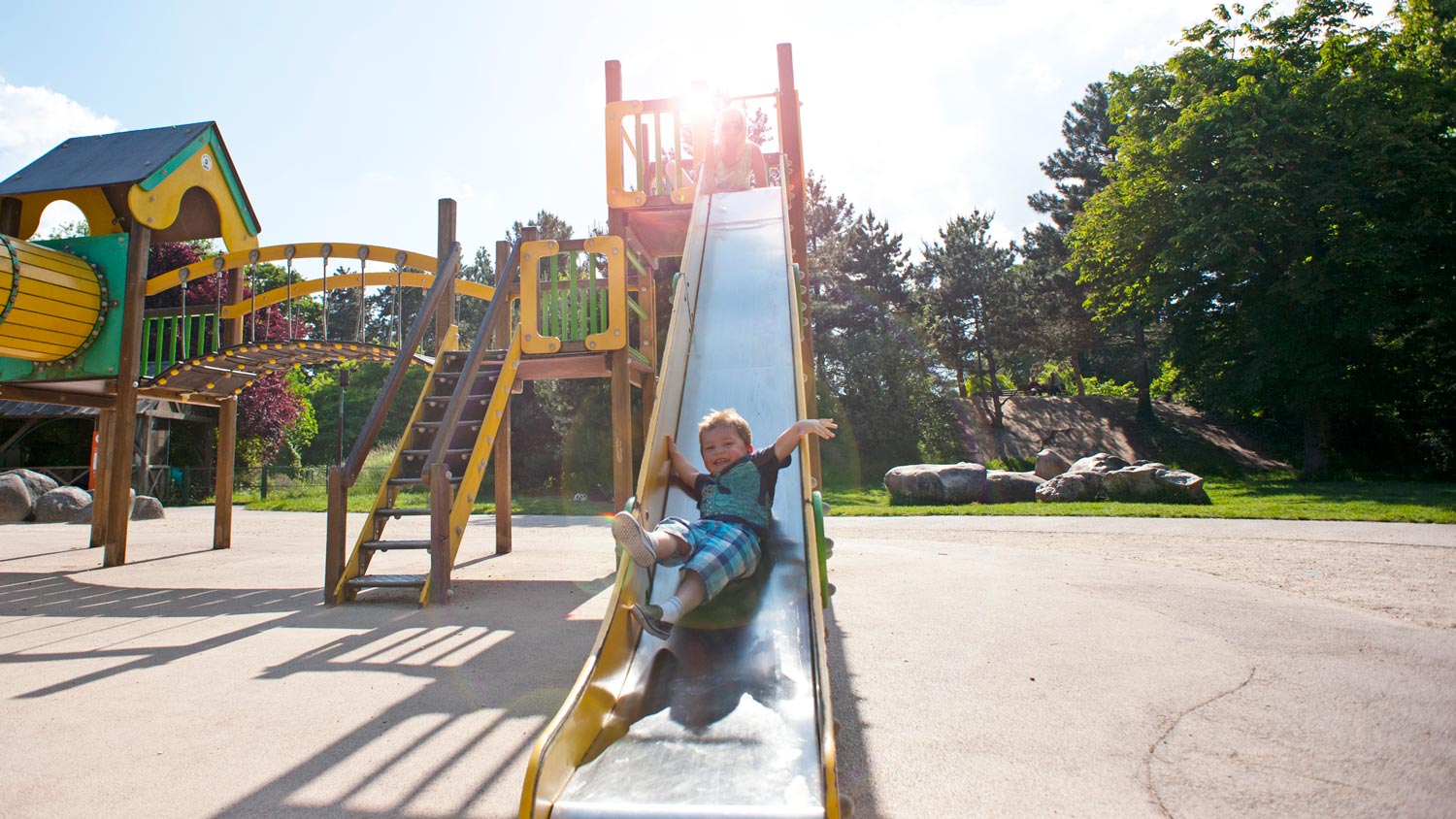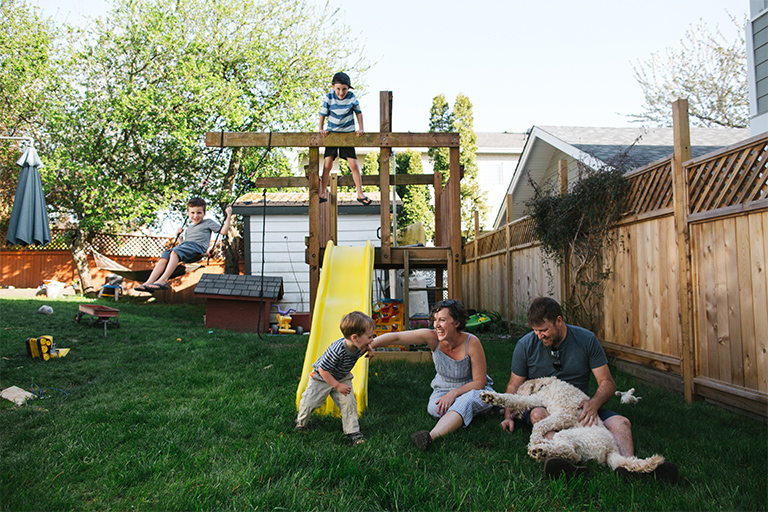
Discover the cost to repair playground equipment. Learn about average prices, key cost factors, and tips to save on your playground repair project.
Checking your kid’s playground equipment can be easy as child’s play


Is anything as fun as swinging on a swing? Not if you ask a kid, and that’s why you’ve decided to build your little ones a full backyard playground of their very own, complete with a swing, seesaw, and slide (oh my!). But before you set everything up, read our comprehensive equipment safety checklist, so you know your children will spend their time laughing and playing in the yard, not crying over scrapes, bruises, and bumps at the doctor’s office. This is especially true if you’ve just learned how to build a backyard playground.
Before you shell out the big bucks for the cost of a swing set or playground, choosing a secure place to erect your playground is just as important as checking each component for safety. If you aren’t sure if your backyard is an ideal place for a play set, contact a local playground installer.
Choose a site away from things that can cause injuries, such as overhanging tree branches, wires, tree stumps, or large rocks.
Choose level ground.
Confirm that appropriate guardrails are in place.
Identify separate areas for active play (like swinging) and quiet play (like digging in a sandbox).
Maintain ample distance between different pieces of equipment (for example, a slide shouldn’t land directly in front of a swing).
Decide if you’d like to add multiple play stations like a mud kitchen.
Use soft surface material—such as wood chips, shredded tires, mats made of safety-tested rubber, or sand—rather than concrete or asphalt, which can spell disaster if a little one takes a tumble. It’s also vital that a 6-foot fall area cushions all surfaces surrounding the playground equipment. Don’t forget to check the following:
Keep surfaces at least 12 inches deep to absorb impact.
Replenish any loose material such as wood chips every four to six months.
All the nuts and bolts need to be secure so the playground is as stable as possible.
Fasten screws, bolts, and nuts tightly.
Use lock washers or self-locking nuts for security.
Close “S” hooks so the gaps are as narrow as possible (ideally, no larger than the thickness of a dime).
Close exposed tubing and exposed bolts with caps.
Bury equipment anchors or cover them with a protective surface.

There are some general safety guidelines to follow that apply to the whole set.
Make sure all play equipment is 8 feet or lower.
Check regularly for cracks, warping, rust, splinters (in wood items), or other signs of aging.
Ensure that the equipment doesn’t have sharp points or edges.
Check regularly for signs of insect nests or infestations, especially in wood equipment.
Check all openings—such as those between ladder rungs, posts, and railings—to make sure spaces are small enough so children can’t fit their head and body through.
Measure handrails so they’re 1–1 1/2 inches in diameter or small enough for a child’s hand to grip.
Install soft seats.
Install full-bucket swing seats for toddlers.
Space swings appropriately: 8 inches between swings, 8 inches above the ground, with at least 12 inches between any swings and supporting structures such as poles.
Ensure swings with unlimited lateral motion (such as disk or tire swings) are at least 24 inches from supporting structures.
Check that there’s nothing on a slide that’ll snag on a child’s clothing.
Confirm the slide is anchored firmly to the base.
Install handrails on the steps leading to the slide platform.
Check metal slides for overheating on hot days (we advise skipping metal altogether).
Replace slides once signs of rust or deterioration appear.
Check that the hand grips are securely fastened.
Consider adding a tire under each seesaw seat for extra safety.

Safety should always be a priority, long after you’ve set up the playground of your children’s dreams. Here’s a weekly, monthly, and seasonal checklist to check that the playground equipment is in working order.
Clean the equipment.
Check for and remove any debris, pet poo, weeds, broken glass, or other items that aren’t supposed to be there.
Make sure drainage is functioning properly (for example, no standing water).
Inspect all equipment from top to bottom and look for signs of rust, cracks, loose bolts, or other items that should be repaired or replaced.
Check for noticeable or new gaps.
Store items not in use during the winter so they don’t deteriorate in the elements.
Do a temperature check of equipment to prevent burns in the summertime (for example, plastic can get hotter than you think).
Check the surface material level and replenish as necessary.
Follow these tips to make sure you’ve got all your bases covered.
Supervise your kids at all times to prevent accidents.
Talk to your kids about the proper use of playground equipment (for example, sliding feet first).
Eliminate all playground equipment with hanging ropes, which are a strangulation hazard.
Never use playground equipment when wet since it’ll become slippery.
From average costs to expert advice, get all the answers you need to get your job done.

Discover the cost to repair playground equipment. Learn about average prices, key cost factors, and tips to save on your playground repair project.

Get informed before hiring a local pro and discover swing set assembly cost estimates, key price factors, and tips to save on your backyard project.

Wondering who to hire to install playground equipment? Learn which playground installer to call and how pros deliver safe, compliant installation.